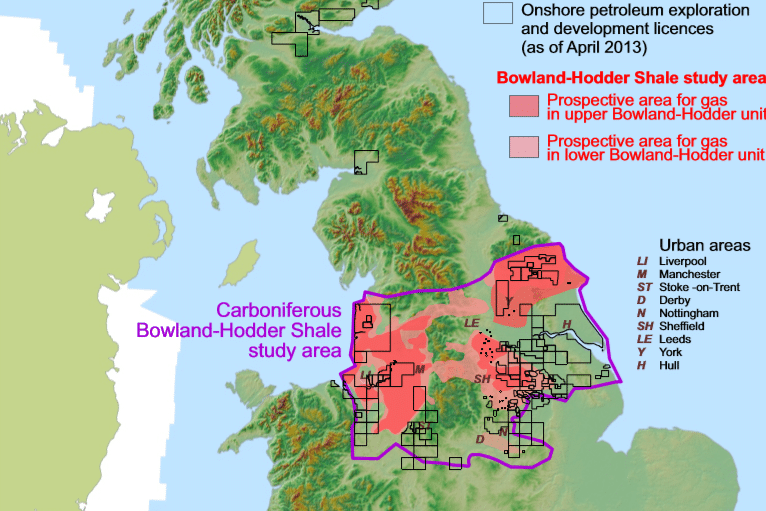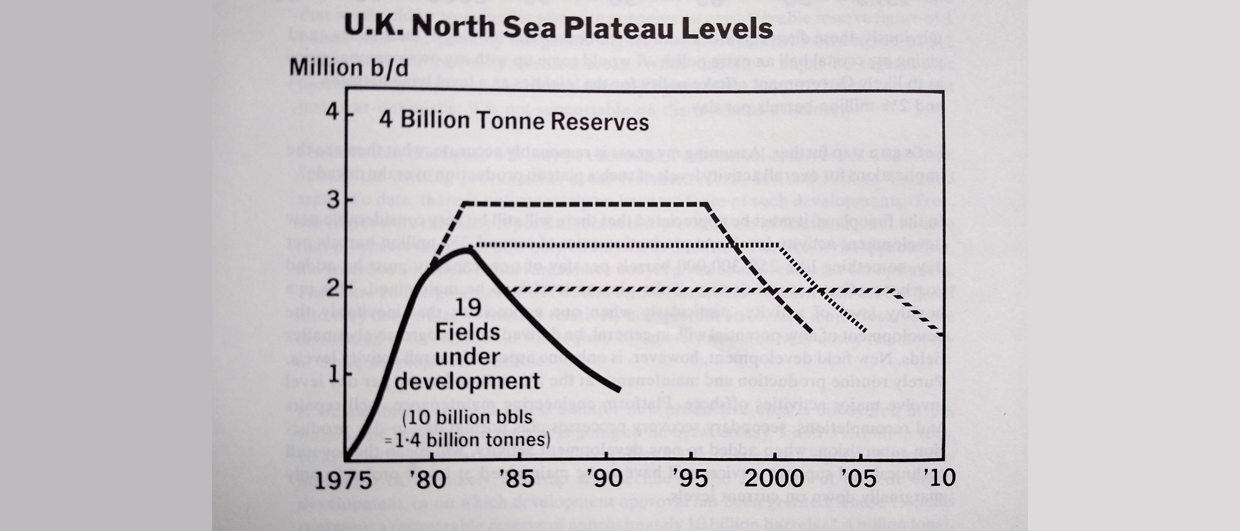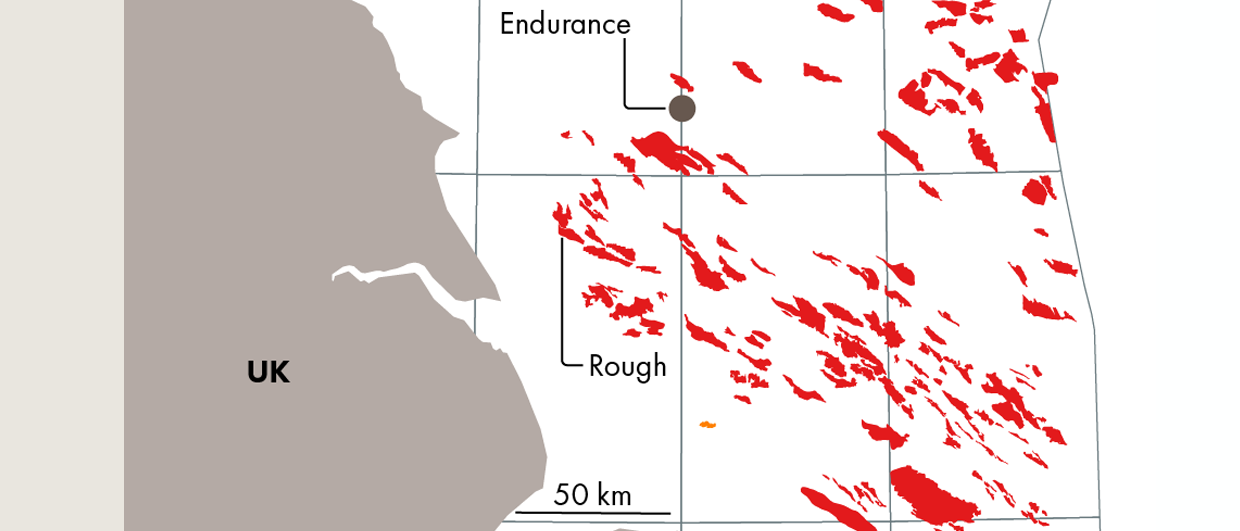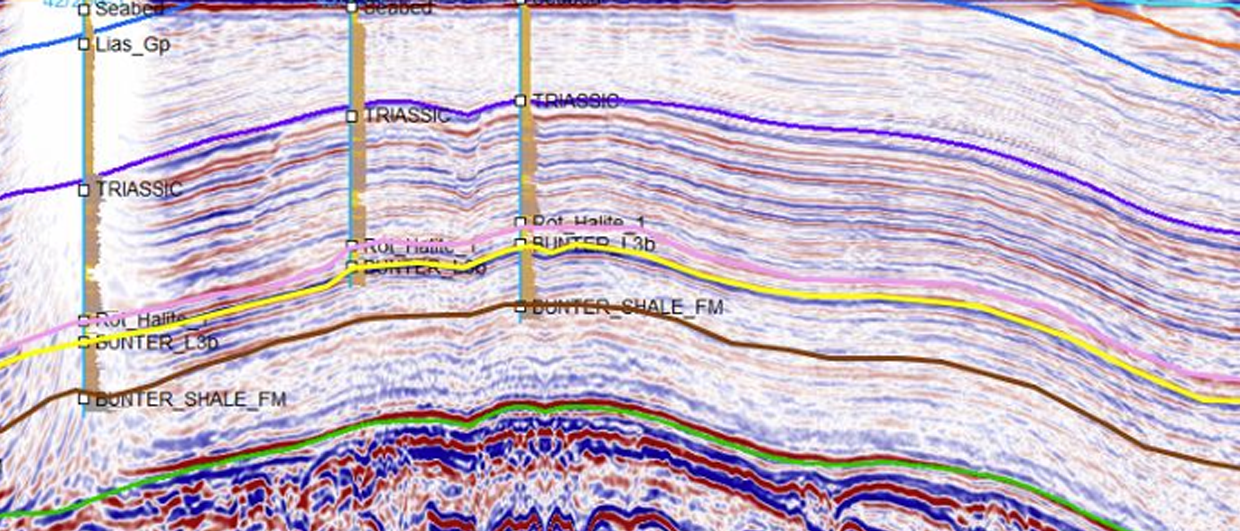INEOS announced the successful results of recent tests in the Bowland shale at Tinker Lane, Nottinghamshire. Together with partner iGas, INEOS found very high concentrations of gas, comparable (and in some of the tests higher) than the average levels in the Barnett shale in Texas. The tests found an average level of 60.7 standard cubic feet (scf) per tonne of gas. For comparison: the average for the Barnett shale is 39 scf per tonne.
This is good news for exploration in the Bowland basin as a whole but it is not yet clear if a commercial resource has been discovered in Tinker Lane. The site sits on the edge of the Bowland shale – further tests are scheduled to be carried out in the heart of the Bowland geography in the coming months where commercial drilling is much more likely to be viable according to INEOS.
Impact on the UK economy
Tom Pickering, COO of INEOS Shale believes that UK shale could be truly transformational for the UK economy, bringing untold jobs and investment to some of the countries most deprived areas.
“With Brexit just around the corner and the UK increasingly dependent on expensive foreign gas, now is the time for strong leadership to take advantage of a once in a generation opportunity to create an indigenous shale gas industry. Specifically, we need the right regulations on shale – making further testing both safe and viable.” He adds.
Seismicity limit
Two of the major shale gas players in the UK, Cuadrilla Resources and INEOS have challenged the regulations set by the UK government for shale gas drilling and more specifically the seismicity limit. To release gas from the shales, hydraulic fracturing (or “fracking”) is used where fluids consisting mainly of water and sand are injected at high pressures into the shales in the subsurface. Hydraulic fracturing causes tremors in the earth, comparable to natural earthquakes. The seismicity limit in the UK is currently set to 0.5 on the Richter Scale. This means operations must stop when seismic activity of 0.5 on the Richter Scale or higher is recorded.

Both Cuadrilla and INEOS have asked the authorities to review the traffic light system in place now but without any success thus far. The Department for Business, Energy and Industrial Strategy has stressed that the UK’s “world-leading regulations” will remain in place until further notice, “to ensure fracking happens safely and responsibly”.
The UK limit seems to be quite conservative when comparing to Canada and the USA, where the upper limit is set at 4 on the Richter Scale. In its call to the government -To end “unworkable” shale policy or end shale- Jim Ratcliffe, INEOS Chairman makes following statement, “The Department of Business, Energy & Industrial Strategy (BEIS) seems to lack a basic understanding of the Richter Scale. It is a logarithmic scale. The limit within the United States is typically set at 4.0 – a level that the US Environmental Protection Agency feels is safe and will not lead to any damage to land, property or people. To put that into perspective, magnitude 4.0 is 3,162 times higher than 0.5 and 177,827 times stronger in terms of energy release.”
Cuadrilla has made it very clear that they want to continue fracking but with a higher seismicity limit. The government has however rejected their appeal for planning permission to develop four fracking wells in the Fylde area because of traffic concerns.
Bowland Shale geology and resources
In 2013 The British Geological Survey published a study on The Carboniferous Bowland Shale gas: geology and resource estimation.
Marine shales were deposited in a series of tectonically active basins across central Britain during the Visean and Namurian. The marine shales can be up to 5000 m thick in basin depocentres (i.e. the Bowland, Blacon, Gainsborough, Widmerpool, Edale and Cleveland basins) and they contain sufficient organic matter to generate considerable amounts of hydrocarbons, as been proven by the conventional oil and gas fields around these basins.

The organic content of the Bowland-Hodder shales is typically in the range of 1-3% but can reach 8%. The maturity of the Bowland-Hodder shales is a function of burial depth, heat flow and time, but subsequent uplift complicates this analysis. Shales are considered mature for gas generation (vitrinite reflectance > 1.1%) at depths greater than 2900 m. Due to uplift the present-day depth to the top of the gas window varies and can be much shallower.


In the study of the BGS the total volume of potentially productive shale in central Britain was estimated using a 3D geological model. This volume was truncated upwards at a depth of 1500 m below land surface (a suggested US upper limit for thermogenic shale gas production) or the depth at which the shale is mature for gas generation (whichever was the shallowest). The volume of potentially productive shale was used as one of the input parameters for a statistical calculation (using a Monte Carlo simulation) of the in-place gas resource. The total gas in place in the Bowland shales is estimated between 822 and 2281 Tcf combining the upper and the lower Unit.
Recent wells
Apart from the well at Tinker Lane by iGas and INEOS, Cuadrilla recently finished drilling and fracking at Preston New Road in Lancashire and iGas is currently drilling at Springs Road-1 in the Gainsborough Trough basin.

Cuadrilla announced earlier this year the results from its flow-testing of the UK’s first ever horizontal shale gas exploration well at Preston New Road.
The conservative micro-seismic operating limit during hydraulic fracturing, set at just 0.5 on the Richter Scale, constrained the volume of sand that could be injected into the shale rock according to Cuadrilla. The well could only partially be tested with 2 out of 41 stages along the horizontal section fractured fully as designed, and less than 14 per cent of the sand we had planned to inject into the shale rock put in place. The natural gas flow had a peak rate of over 200,000 standard cubic feet per day and a stable rate of some 100,000 standard cubic feet per day. If the whole well could effectively be hydraulically fractured, Cuadrilla expects a flow range of between 3 and 8 million standard cubic feet per day of gas.






